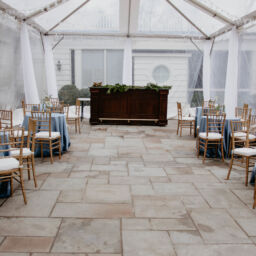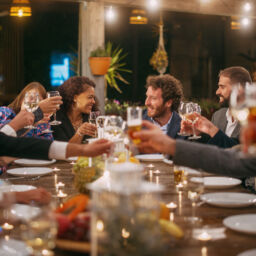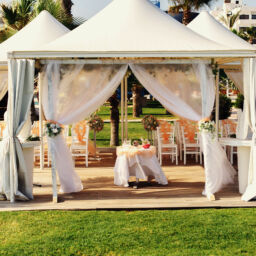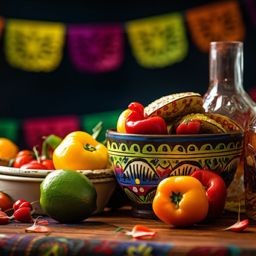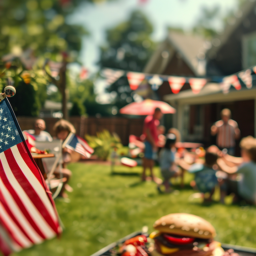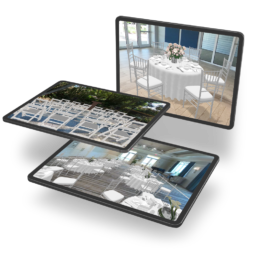In the world of hospitality, design is the silent seducer, the unwritten storyteller that whispers comfort or extravagance, romance or business. Few spaces hold as much potential for narrative and ambiance as the hotel restaurant. A thoughtfully curated restaurant space can be the crescendo of a guest’s stay, where good memories are made and served alongside each sumptuous dish.
From luxurious to contemporary, casual to high-concept, a hotel’s restaurant design balances aesthetics and functionality, always aiming to captivate the senses and create an unforgettable experience. In this guide, we’re taking a deep dive into the most tantalizing restaurant design concepts that lure guests and ensure they return for more.
The Art of Theme
Your restaurant’s design theme is the backdrop and the script of your brand’s story. Whether it’s a nod to local culture, a time-honored tradition, or a fantastical world, every theme should resonate with the guests.
Local Flavor
For hotels in historically rich or culturally significant areas, there’s an opportunity to capture the essence of the locale in the restaurant design. This could mean incorporating traditional materials like handcrafted tiles into the flooring or showcasing local artists’ work on the walls. Regional textiles, furniture, and even traditional musical instruments can harmonize the theme and create an immersive dining experience unique to the location.
Modern Elegance
Contemporary design themes often involve minimalist aesthetics, clean lines, and an abundance of natural light. Sleek dining chairs, monochromatic palettes, and avant-garde art installations can create a timeless and sophisticated atmosphere. Pairing this design with high-end tableware and modern cuisine complements the overall experience, demonstrating precision and thoughtfulness in every detail.
Whimsical Wonder
Hotels targeting a younger or more adventure-seeking audience can benefit from whimsy-filled designs. Think of unconventional seating arrangements, walls adorned with captivating murals and lighting fixtures that resemble mystical creatures. The key is to make the space feel Instagrammable, inspiring guests to become part of the story through shareable moments.
The Power of Texture
Textural elements in a restaurant design are the tactile threads that tie the theme together, creating depth and visual interest.
Surfaces That Speak
A mix of matte and gloss surfaces can create dramatic contrasts that catch the eye. By varying textures in the materials, such as velvet banquettes against polished wood tables or rough stone walls juxtaposed with soft drapery, you can add a sensorial layer to the dining experience. Texturally interesting surfaces not only look good but also absorb sound, making for a more intimate and comfortable dining environment.
Play with Patterns
Like a well-crafted dish, patterns add complexity and character to a space. Geometric tiles for a floor, bold wallpaper, or a grid of different-sized mirrors can create a playful dynamic. It’s also worth considering how these patterns interact with the space from various vantage points. For example, a ceiling fitted with a symmetrical design can add a mesmerizing effect for guests.
Lighting Language
Lighting in a restaurant is a language of its own, with the power to instantly change the mood and perception of the space.
Setting the Scene
Adjustable lighting fixtures can transform the mood of a space from a breakfast nook to a romantic dinner spot. Dimmers, candles, pendant lights, and step lights can all be part of the playbook. Warm-toned lights can infuse a cozy feel, while brighter, cooler lights can invigorate the space for a breakfast crowd. Furthermore, consider the natural light and how it can be harnessed throughout different parts of the day.
Focal Points
Use lighting to emphasize or play down certain design elements. A spectacular chandelier can serve as a centerpiece, while spotlights can draw attention to a gallery or a specific architectural feature. Be cautious with lighting to avoid harsh, unflattering shadows or over-bright spaces that detract from the meal.
Sound Strategy
Sound often takes a back seat in the design of a hotel restaurant, yet it is a critical element in the sensory experience.
Acoustic Ambiance
Echoes and noise can diminish the dining experience in even the most beautiful space. Consider textured surfaces that absorb sound, like soundproof wall paneling, carpeting, and acoustic ceiling treatments to combat this. Live plants and softer seating options can also contribute to a healthier acoustic environment.
The Playlist
The music choice should align with the restaurant’s theme and the time of day. A lively playlist for brunch could shift to softer, melodic tunes for a romantic dinner. Ensuring the sound level is at the most comfortable conversational level is equally important, especially in fine dining.
Ergonomics and Flow
Aesthetics and ambiance aside, a restaurant’s design must be practical and conducive to smooth operations.
The Seating Equation
Comfortable, appropriate seating is essential. A mix of table sizes should accommodate different group types, and the distance between tables should strike a balance between intimacy and practicality. Banquet seating provides flexibility and comfort, while bar seating or higher tables cater to different dining preferences.
Service Efficiency
Consider the path from the kitchen to the table and how various stations fit into the flow. Service staff should be able to move gracefully and efficiently, and the layout should minimize congestion. This ergonomic approach to design will not only enhance the dining experience for guests but also improve the working conditions for your staff.
Branding at the Table
The tablescape is an often-overlooked canvas for restaurant design. It’s an opportunity to showcase your brand’s attention to detail and creativity.
Tabletop Storytelling
Table settings can be an extension of the restaurant’s theme, with the choice of flatware, linens, and centerpieces contributing to the narrative. High-quality, tactile tableware can elevate the dining experience, and unique centerpieces can be conversation starters. Consider subtly incorporating branded elements through the napkin logo or a custom glass etching.
Greenery and Freshness
Adding a touch of nature with fresh flowers or potted plants can refresh the table with color and life. It’s a high-impact, low-maintenance way to enhance the overall aesthetic. It can also serve as a reminder of sustainability and the healthy, fresh produce many restaurants aim to highlight.
Sustainability is Key
Sustainable design practices are increasingly crucial in guests’ eyes and can also be an opportunity for innovation and cost-savings.
Eco-Friendly Materials
Choose materials with a low environmental impact, such as recycled or locally sourced options. Consider the entire life cycle of materials, from manufacturing to disposal. Furniture and finishes should be durable, providing a longer service life and reducing the need for replacements.
Energy Efficiency
Opt for efficient lighting and appliances and consider using renewable energy sources. Natural lighting and ventilation can reduce the reliance on artificial systems. Design can also support water conservation efforts, for example, by selecting low-flow fixtures in restrooms.
Conclusion
In the competitive landscape of hotel dining, design is a differentiating factor that can set you apart from the crowd. Every decision, from the theme and materials to lighting and sound, is an opportunity to evoke emotion, offer comfort, and create an entirely new experience.
The best-designed hotel restaurants go beyond being a place to eat; they are a destination in their own right, an integral part of the guest’s story. And in the age of social media, a beautifully designed restaurant is shared, commented on, and long remembered.

